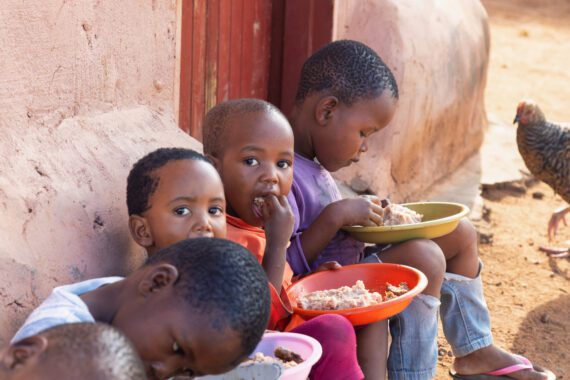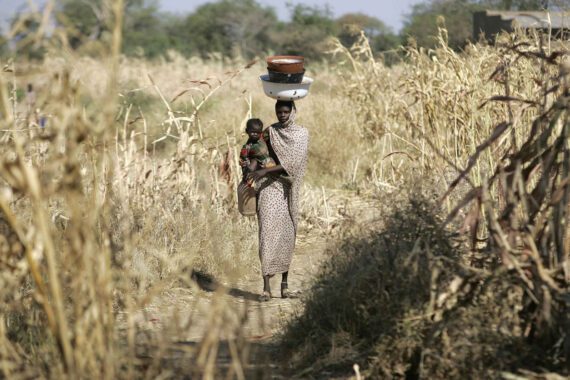Editor’s note: This is the second in a series of pieces about how we can ensure that very young children have the nutrients they need to grow up healthy.
“It takes a village” is a cliché. But when it comes to protecting the newest lives, babies from birth to four weeks old, it is absolutely accurate.
Bread for the World tells the story of the encouraging progress in saving the lives of young children over the past generation. Babies born in 1990 had a 1 in 11 chance of not living to their fifth birthday, but babies born in 2022 had a much lower chance, 1 in 27. This is still far too many deaths, but it is significant progress.
Of all deaths among children under 5, 47 percent are newborns, babies not yet four weeks old. The world has made progress in saving the lives of these babies, but it has not been as rapid as among older babies and children.
Most countries are capable of making faster progress. According to UNICEF, “The elements necessary to … [reduce] newborn mortality—ensuring high-quality maternal and newborn care—are well-known and within most countries’ capacity to implement.”
We all realize that the lives and health of newborns are inextricably linked to the lives and health of their mothers. The health and nutritional status of girls and women is of paramount importance to the health of their babies.
Globally, prematurity is the leading cause of death in children under 5. In countries around the world, the rate of preterm birth in 2020 ranged from 4 percent to 16 percent. Preterm birth was the cause of approximately 900,000 deaths in 2019 (latest data available). While risks can be managed, more research is needed because in many cases, the cause is unknown.
Preventing deaths and complications from preterm birth starts with a healthy pregnancy. The World Health Organization’s guidelines emphasize eating a nutritious diet and not smoking. In addition, receiving continuity of care by professional midwives can reduce preterm labor by up to 24 percent.
Much of the world’s progress in quality of life issues can be credited to learning from the successes of others, and neonatal survival is no exception.
One success story is Bangladesh. In just a little over one generation, Bangladesh has reduced its neonatal death rate from 64.2 deaths per 1,000 live births in 1990, to 42.4 per 1,000 births in 2000, to 20.1 per 1,000 birthsin 2023. Here is a brief look at what made this very significant progress possible.
We know that health is inextricably tied to larger socioeconomic conditions. Bangladesh’s success in other areas of development and economic growth provided the backdrop for progress. A large network of roads was built, reducing barriers to seeking medical attention. Access to electricity improved—important since babies are born at all hours. The country has made enormous progress in developing the capacity to manufacture its own pharmaceuticals. More affordable pricing makes a difference in a lower-income country with more than 176 million people as of 2024.
Many more health clinics were opened. In 2016, the country reached the point where almost all women of reproductive age could reach a health facility within one hour.
Dr. Abdul Mannan, a physician and chair of the neonatology department at Bangabandhu Sheikh Mujib Medical University in Dhaka, said that a key factor in improving newborn survival was reducing the share of births that were taking place in homes instead of health-care facilities, adding: “In 1990 about 90 percent of deliveries were happening in homes, basically just assisted by relatives [of the mother] who had no training.”
Evidence over decades has shown that a major factor in progress against child malnutrition is education for girls.Bangladesh made rapid progress in this area. By 2019, 68 percent of women were literate, up from just 26 percent in 2000.
Early marriage is associated with higher rates of maternal and newborn mortality because girls are giving birth before their bodies are mature. Since the turn of the millennium, the decrease in very early marriage has been rapid: among women ages 20 to 24, the proportion who had been married by the age of 15 fell from 38 percent in 2000 to 19 percent in 2017.
Government programs were successful in reaching many women and girls from lower-income families. For example, health and family welfare workers identified pregnant women in several hundred of the poorest subdistricts and gave them information and vouchers for transportation.
Researchers found that a long-standing initiative that provides stipends and tuition assistance for girls in rural secondary schools has reached more than 2 million girls. These initiatives“demonstrate the power of investing intersectorally in social programs that reduce health disparities.”
In our next piece, we will examine the possibilities of progress in countries that lack some of the ingredients of Bangladesh’s success.
Michele Learner is managing editor, Policy and Research Institute, with Bread for the World.



